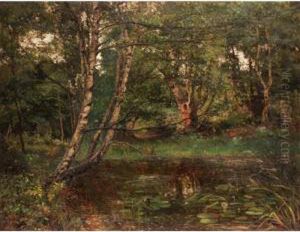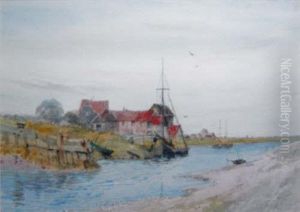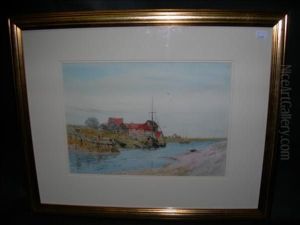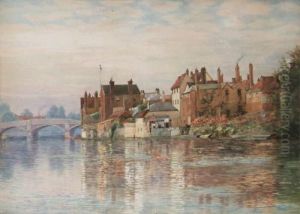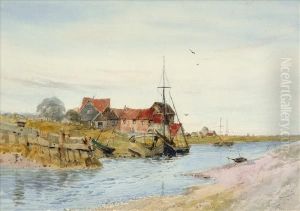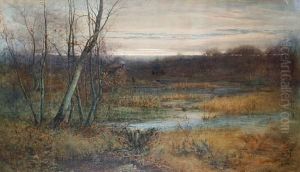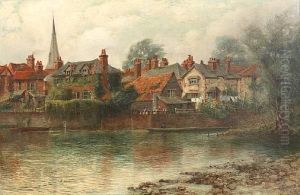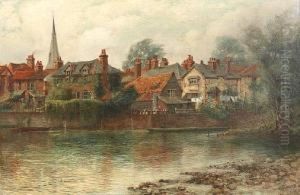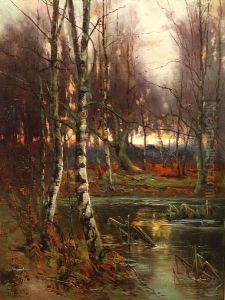George Dunkerton Hiscox Paintings
George Dunkerton Hiscox was an English artist known primarily for his watercolor landscapes and marine scenes. Born in 1864, Hiscox was a part of the British art scene during a time of significant change and development in the art world. Hiscox's work, however, remained rooted in the traditions of the English landscape genre, reflecting the influence of the picturesque and the sublime in his portrayals of the natural world.
Hiscox's art education and early career began in the latter part of the 19th century. He was educated at the National Art Training School, South Kensington, which later became the Royal College of Art. Hiscox was a contemporary of the Impressionist movement, though his work did not adopt the Impressionists' preoccupation with light and color to the same extent. Instead, Hiscox focused on capturing the enduring qualities of the English countryside and coastal regions, showcasing his skill in depicting water and atmospheric effects with delicate brushwork.
Throughout his career, Hiscox exhibited at various prestigious institutions, including the Royal Academy of Arts and the Royal Institute of Painters in Water Colours. Hiscox's commitment to traditional subjects and techniques did not garner the same level of fame as some of his contemporaries who embraced more modernist approaches. Nonetheless, he enjoyed a degree of success and was respected among his peers for his craftsmanship and dedication to the medium of watercolor.
George Dunkerton Hiscox's legacy lies in his quiet celebration of the English landscape, which continued to resonate with audiences who appreciated the serene and contemplative qualities of his work. His paintings serve as a record of the rural and coastal scenery of his time, often imbued with a sense of nostalgia. Hiscox passed away in 1943, leaving behind a body of work that, while not groundbreaking in the context of the avant-garde movements of his time, remains appreciated for its technical skill and evocative representation of England's natural beauty.
